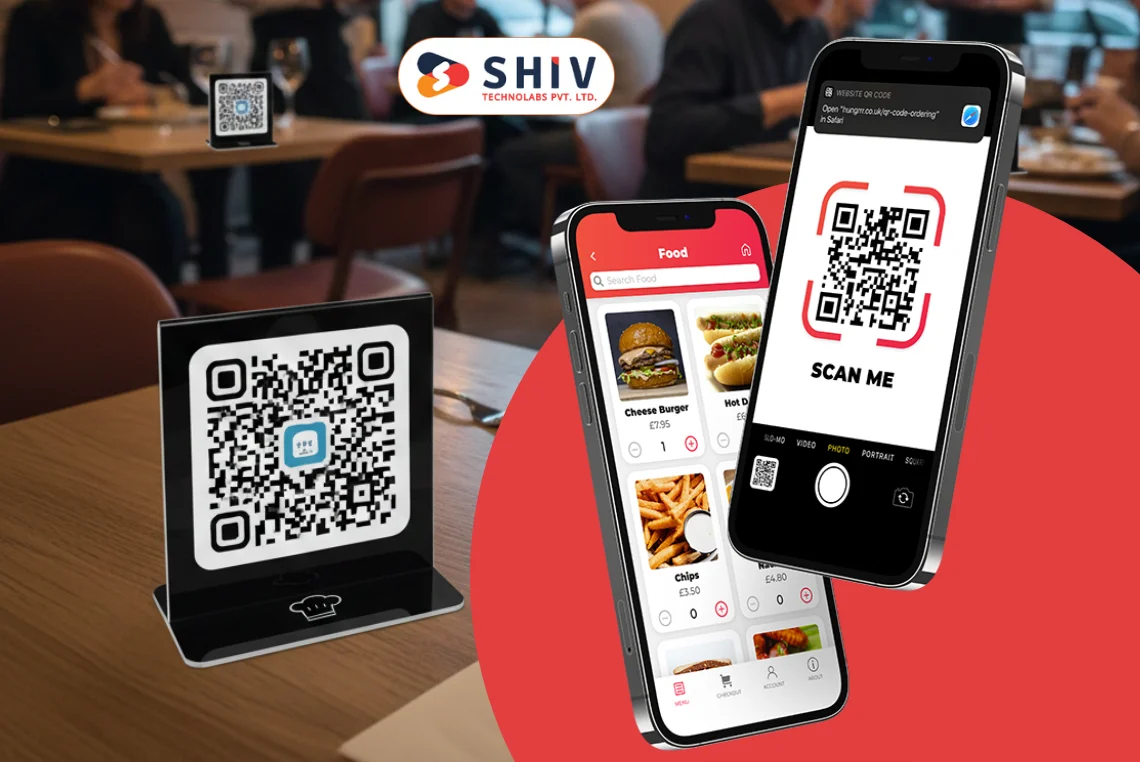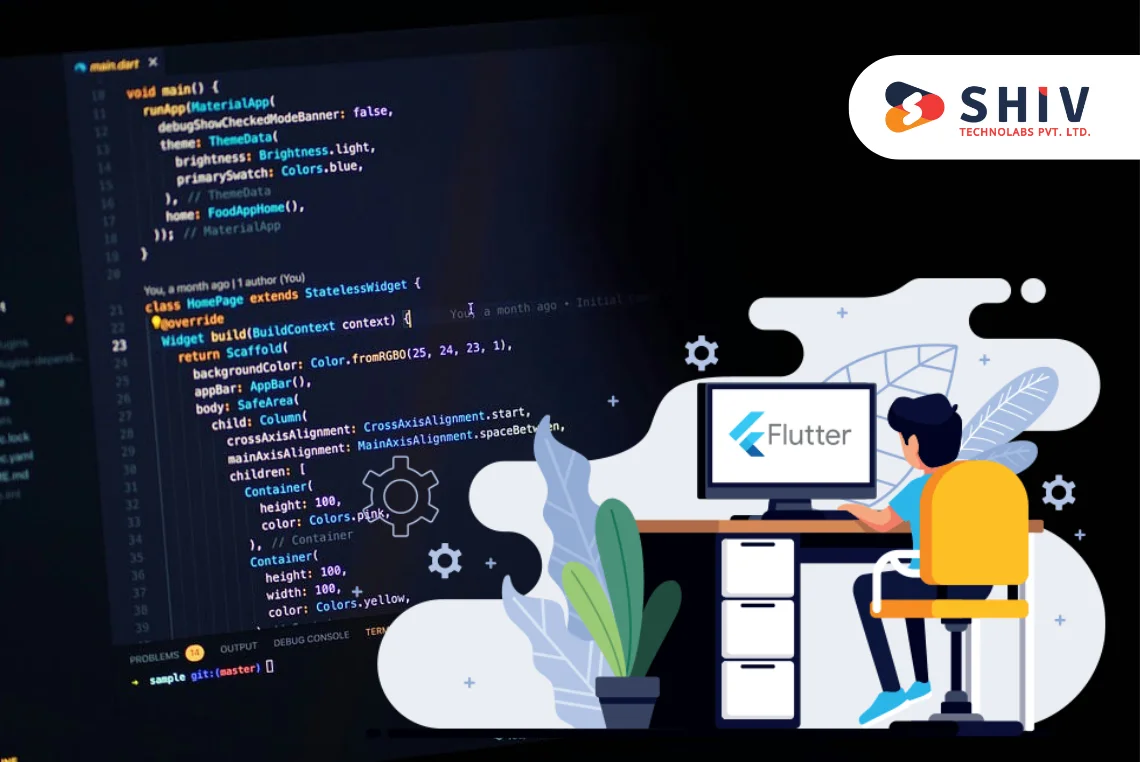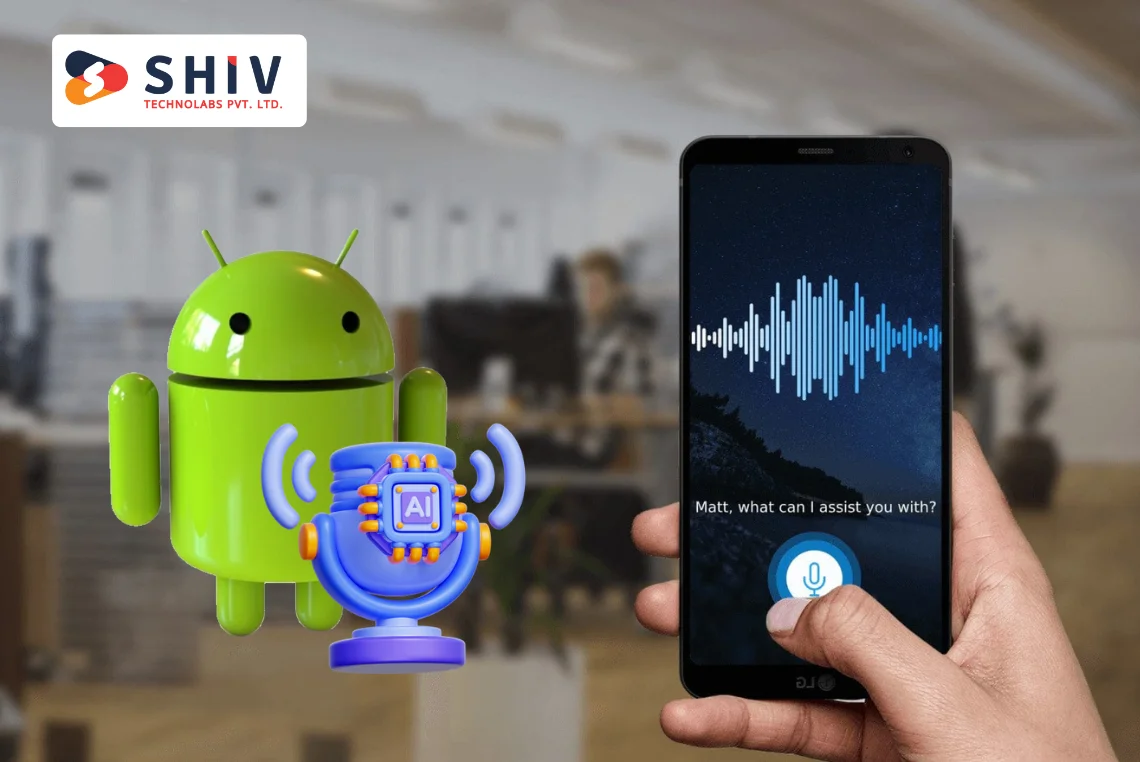Table of Contents
Ride-sharing App Development: Features, Costs & Steps
Ride-sharing services like Uber, Lyft, and Grab have dramatically reshaped urban transportation. By offering convenience, affordability, and ease of use, they have rapidly become essential in daily life. Given their popularity, many entrepreneurs and businesses are now interested in entering this profitable market. However, creating a successful ride-sharing app involves more than just replicating existing apps. It requires strategic planning, unique features, and a clear understanding of the development process and costs involved. As a leading taxi booking app development company, we can guide you through every step of building your ride-sharing app, ensuring it stands out in the competitive market.
Essential Features of a Ride-sharing App

Ride-sharing apps generally consist of three separate but interconnected apps: one for passengers, one for drivers, and an admin dashboard.
# Passenger App Features
- Easy Registration & Login: Allow quick sign-up via email, phone number, or social media accounts.
- Ride Booking: Users can quickly book rides or schedule them for later.
- Real-Time Tracking: Real-time GPS tracking lets passengers monitor their driver’s location.
- Fare Estimator: Users can view approximate fares before confirming their rides.
- Multiple Payment Options: Offer secure payments via credit/debit cards, digital wallets, or cash.
- Push Notifications: Regular updates about driver status, payment confirmations, and promotional offers.
- Rating & Review System: Allows passengers to rate their ride experience and provide feedback.
# Driver App Features
- Fast Registration & Verification: Simple yet secure registration process with essential document uploads for verification.
- Ride Management: Drivers can accept or decline rides based on convenience and location.
- Route Navigation: Integrated navigation services to ensure the fastest and most efficient routes.
- Earnings Dashboard: Detailed earnings summaries and transaction history.
- Online/Offline Status: Flexibility for drivers to toggle their availability.
- Ratings and Reviews: Ability to rate passengers, maintaining safety and service standards.
# Admin Panel Features
- Comprehensive Dashboard: Real-time insights into business performance, active rides, earnings, and other critical metrics.
- User Management: Efficiently manage both driver and passenger accounts, including resolving disputes.
- Fare & Commission Management: Set, modify, and manage fares and commission rates dynamically.
- Reports & Analytics: Detailed reports on performance metrics, user behavior, and revenue streams.
- Customer Support Management: Manage disputes, customer queries, and feedback efficiently.
Understand how: New Taxi App is Shaking Up Abu Dhabi’s Ride-Hailing Industry
Cost of Developing a Ride-sharing App
The cost of developing a ride-sharing app varies significantly based on several factors, including app complexity, features integrated, development platform (iOS, Android, or cross-platform), location of the development team, and project timeline.
# Development Cost Breakdown by Feature Complexity
| Feature Complexity | Basic Features (MVP) | Moderate Features | Advanced Features |
|---|---|---|---|
| Passenger App | $8,000 – $15,000 | $18,000 – $30,000 | $35,000 – $50,000 |
| Driver App | $6,000 – $12,000 | $15,000 – $22,000 | $25,000 – $40,000 |
| Admin Panel | $4,000 – $8,000 | $10,000 – $15,000 | $18,000 – $25,000 |
| Real-Time GPS & Tracking | $2,000 – $5,000 | $6,000 – $10,000 | $12,000 – $18,000 |
| Payment Integration | $1,000 – $2,000 | $3,000 – $5,000 | $5,000 – $8,000 |
| Push Notifications | $500 – $1,000 | $1,000 – $2,000 | $2,000 – $3,500 |
| Rating/Review System | $1,000 – $2,000 | $3,000 – $4,500 | $6,000 – $8,000 |
# Cost by Development Phases
| Development Phase | Estimated Cost Range |
|---|---|
| Market Research & Conceptualization | $3,000 – $7,000 |
| UI/UX Design | $4,000 – $10,000 |
| Frontend Development | $12,000 – $30,000 |
| Backend Development | $15,000 – $35,000 |
| App Testing & QA | $3,000 – $7,000 |
| App Launch & Deployment | $2,000 – $5,000 |
| Post-launch Maintenance | $3,000 – $8,000 per year |
# Development Costs by Geographic Region
| Region | Cost per Hour (USD) | Total Estimated Cost |
|---|---|---|
| North America (USA, Canada) | $100 – $200 | $40,000 – $150,000 |
| Western Europe (UK, Germany, etc.) | $80 – $150 | $30,000 – $120,000 |
| Eastern Europe (Poland, Ukraine, etc.) | $30 – $70 | $15,000 – $60,000 |
| Asia (India, China, etc.) | $20 – $50 | $12,000 – $45,000 |
# Breakdown of App Development Costs by Platform
| Platform | Cost Range |
|---|---|
| iOS | $20,000 – $50,000 |
| Android | $18,000 – $45,000 |
| Cross-Platform (React Native, Flutter) | $25,000 – $60,000 |
# Additional Costs for Third-Party Integrations
| Third-Party Service | Estimated Cost |
|---|---|
| Payment Gateway (Stripe, PayPal) | $1,000 – $4,000 |
| GPS & Mapping Services (Google Maps API) | $500 – $2,000/month |
| SMS/Email Notification (Twilio, SendGrid) | $200 – $1,000/month |
| Cloud Hosting (AWS, Google Cloud) | $1,000 – $5,000/month |
# Ongoing Maintenance & Updates Costs
| Maintenance Activity | Estimated Annual Cost |
|---|---|
| Bug Fixes & Performance Updates | $3,000 – $7,000 |
| Adding New Features | $5,000 – $15,000 |
| Server & Infrastructure Maintenance | $2,000 – $6,000 |
Explore steps for Integrating AI into a Mobile App
Steps to Develop a Ride-sharing App

Developing a ride-sharing app requires a structured approach that goes beyond just coding and launching the app. It’s about aligning the app’s features with the target audience’s needs, ensuring smooth user experiences, and staying on top of market trends. Here are the tailored steps to guide you through the development process:
Step 1: In-depth Market Research and Idea Refinement
Before diving into the development, understand your market and competition thoroughly. Conduct detailed research to define your niche—whether you’re targeting a specific region, adding eco-friendly rides, or creating a niche for high-end, luxury services.
- Identify competitors: Study existing players in the market (e.g., Uber, Lyft, Ola) to determine what they do well and where they fall short.
- Target audience: Define your primary user base (commuters, tourists, or business professionals).
- Unique Selling Proposition (USP): Develop a compelling value proposition that differentiates your app from existing services. This could be enhanced features, specialized service areas, or more affordable pricing models.
Step 2: Defining Key Features Based on Business Goals
Tailor the feature set of your app based on your goals. While the basic features are similar across apps (ride booking, GPS tracking, etc.), you can stand out with specialized features.
# Passenger Features:
- Ride Booking & Scheduling: Allow passengers to book rides instantly or in advance. Add features like ride preferences (car type, driver rating).
- Multiple Payment Gateways: Include diverse options such as PayPal, wallets, credit cards, or even cash on delivery.
- Ride History & Receipts: Let users access past ride history and download receipts.
# Driver Features:
- Driver Acceptance/Decline: Allow drivers to accept or reject ride requests based on proximity and availability.
- Automatic Ride Assignment: Create an efficient algorithm to automatically assign rides based on driver availability and location.
- Rewards/Bonuses: Reward drivers for completing a set number of rides or achieving high ratings.
# Admin Features:
- Ride & Revenue Analytics: Allow for detailed reporting on rides, revenue, and user behavior.
- Dynamic Pricing & Surge Pricing: Implement surge pricing for high-demand times (e.g., holidays, rush hours).
- Dispute Resolution System: Offer an in-app feature to handle ride-related complaints from both passengers and drivers.
Step 3: Technology Stack and Platform Selection
Select the best technology stack based on your goals. If you want high scalability and cross-platform support, you’ll need to make specific decisions on how to build the app efficiently.
- Frontend (User Interface):
- iOS: Swift for smooth native performance.
- Android: Kotlin for a modern, robust Android experience.
- Cross-platform: React Native or Flutter if you’re targeting both platforms with one codebase.
- Backend: The server side will handle data storage, ride tracking, and processing user requests. Technologies like Node.js, Django, or Ruby on Rails are recommended for efficient and scalable performance.
- Mapping & Navigation: Use Google Maps API or Mapbox for real-time route optimization and geolocation services.
- Payment Integration: Integrate reliable gateways like Stripe, PayPal, and Razorpay for secure and varied payment options.
Step 4: Design a User-Centric UI/UX
The user experience (UX) plays a huge role in the success of a ride-sharing app. Make sure the design is intuitive, easy to navigate, and efficient for users on the go. Focus on simplicity and accessibility.
- User Journey Mapping: Create wireframes that outline the app’s user journey from sign-up to booking, to driver feedback.
- Minimalist Design: Ensure the UI has clean visuals with prominent, easy-to-click buttons and icons.
- Interactive Elements: Include animations or transitions to make interactions more engaging and fluid.
Step 5: Development of the Core App
Now it’s time to start the development process. Focus on building the core features first, ensuring they work flawlessly before integrating additional features.
- Backend Development: Establish a robust backend that handles ride bookings, real-time notifications, payments, and other operations.
- Frontend Development: Implement the user interface with smooth transitions and responsiveness for different screen sizes.
- Driver and Passenger Matching Algorithm: Design and integrate the algorithm that matches passengers with nearby drivers based on distance, ride preferences, and driver availability.
Step 6: Integration of Third-Party Services
To make your app more functional, integrate third-party services such as payment systems, mapping services, and messaging APIs.
- Payment Gateway Integration: Integrate a reliable and secure payment gateway to ensure smooth and secure transactions for passengers and drivers.
- Push Notifications: Implement push notifications for real-time ride updates, promo offers, and reminders.
- SMS/Email Notifications: Integrate SMS or email APIs for ride confirmations and payment receipts.
Step 7: Rigorous Testing and Quality Assurance
Testing is critical to ensure that the app works as expected in different conditions and on different devices.
- Manual Testing: Perform manual testing to identify issues that automated tests may miss.
- Automated Testing: Use automation tools to check for bugs, crashes, and performance issues across various devices.
- Load Testing: Ensure the app can handle heavy traffic, especially during peak hours.
- Beta Testing: Before the official launch, test the app with a select group of users for real-time feedback on functionality and usability.
Step 8: Deployment to App Stores
Once the app is fully developed and tested, it’s time to launch it on the Google Play Store and Apple App Store. Make sure your app complies with the store guidelines and policies.
- App Store Optimization (ASO): Optimize your app’s title, description, and visuals to stand out on app stores.
- Review Guidelines: Carefully review the app store submission guidelines to ensure your app passes the approval process on both platforms.
Explore here: Launch an Android App to the Google Play Store
Step 9: Continuous Monitoring & Post-Launch Updates
After launching the app, the work doesn’t stop. It’s crucial to keep monitoring performance and user feedback to continue improving the app.
- Monitor Server Performance: Track server uptime and user activity to avoid downtime or service interruptions.
- Fix Bugs & Performance Issues: Regularly update the app to fix bugs, improve performance, and refine features.
- Iterate & Add Features: Continuously add new features based on user feedback, such as in-app chat support, carpooling options, or loyalty programs.
Step 10: Marketing and Scaling
To scale your ride-sharing app, implement targeted marketing strategies and consider expanding to new regions.
- Social Media Marketing: Run campaigns on platforms like Instagram, Facebook, and LinkedIn to raise brand awareness.
- Referral Programs: Offer discounts or credits for users who refer friends to the app.
- Partnerships: Collaborate with local businesses, airports, or tourism companies to promote your service.
Why Choose Shiv Technolabs for Ride-sharing App Development?
At Shiv Technolabs, we excel in providing comprehensive ride-sharing app development solutions. As a leading taxi booking app development company, our expertise spans app design, development, testing, and deployment, positioning us as the ideal partner to bring your app vision to life.
# Benefits of Working with Shiv Technolabs:
- Experienced Development Team: Expert developers proficient in the latest technologies and frameworks.
- Custom Solutions: Tailored apps designed specifically for your business needs.
- Affordable Pricing: Transparent, competitive pricing structures without hidden fees.
- Robust Quality Assurance: Rigorous testing processes to deliver flawless user experiences.
- Ongoing Support & Maintenance: Dedicated post-launch support to ensure consistent app performance.
Conclusion
The ride-sharing app market continues to thrive, presenting exciting opportunities for businesses and entrepreneurs. However, success in this competitive industry requires thorough planning, strategic development, and continuous improvement. By partnering with Shiv Technolabs, you can leverage expert skills and innovative solutions to launch a robust, user-centric ride-sharing app poised to capture market share and drive sustained growth.
Let’s collaborate and bring your innovative ride-sharing app idea to life!






















